If you’re looking for the perfect portrait lens, maybe you should look at this Sigma 85mm f/1.4 lens. It’s part of their Art series, known for its sharpness and excellent build quality. I use this lens for weddings, portraits, and taking pictures of Mr. White, the kitten.
If you want to know why this hefty piece of glass is always attached to my camera, read the rest of my review. Then you’ll know if the Sigma 85mm f/1.4 Art is something you want to invest in.


| Brand |
Brand
Sigma
|
| Lens Mount |
Lens Mount
Canon EF
|
| Maximum Aperture |
Maximum Aperture
f/ 1.4
|
| Focal Length Range |
Focal Length Range
85 mm
|
| Image Stabilization |
Image Stabilization
|
The Sigma Art line was designed for artists who value unbeatable expressive performance over compactness and multifunction. As expected, the Sigma Art series offers premium image quality with a maximum aperture of f/1.4. This feature delivers distinct sharp and crisp photographs in darker venues.
The Sigma 85mm f/1.4 DG HSM Art was declared the “best DSLR prime lens of 2017” at the TIPA Awards in 2017.
The Sigma 85mm f1/.4 DG HSM Art is compatible with 86mm filters and comes with its own lens hood.
Sigma has promised photographers unparalleled image quality with this lens. But, does it deliver?
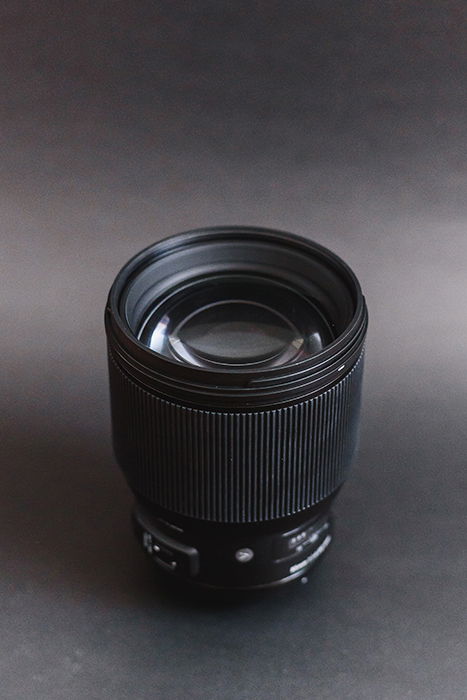
The Sigma 85mm f/1.4 DG HSM Art is designed with professional and intermediate photographers in mind.
It’s perfect if you are looking for the dreamy bokeh effect on your portrait shots. It takes the cake for impeccably sharp wedding images. Especially ones shot in dark venues where artificial light disturbs the moment’s natural intimacy. For these distinct occasions, this lens is perfect for you.

However, I wouldn’t recommend it for those beginning their photography journey.
I believe that a beginner photographer benefits from a lighter and more versatile lens. A possible alternative for an enthusiast would be the nifty fifty. It’s easy to use and gives the most flexible range of focal lengths you use most often. Good examples include the 50mm f/1.8, as seen in Canon EF 50mm f/1.8 STM or a Nikon 50mm f/1.8D.
You can use a 50mm lens for both portraits and outdoor scenes. It has a shallow depth of field that’s wide enough for gorgeous landscapes. The focal length works wonders when composing shots.
If you are strictly looking for an 85mm portrait lens, but are not ready to spend big bucks, a worthy alternative would be the Nikon AF-S 85mm f/1.8G or the Tamron SP 85mm f/1.8 Di VC USD.
So let’s see what this award-winning lens can offer for the price!
The beauty of third-party manufacturers is that they can provide lenses for all the different brands. The Sigma 85mm f/1.4 DG HSM Art was specifically designed for full frame DSLRs. As a result, it is compatible with a variety of mounts like the Canon EF models (like the EOS 6D, EOS 90D, and EOS 5D), Nikon F models (like the D750, D6, and D850), the Sony E, and Leica L.
A great feature is that this lens is also eligible for Sigma’s mount conversion service. So you don’t have to sell your lens if you’re thinking about changing systems.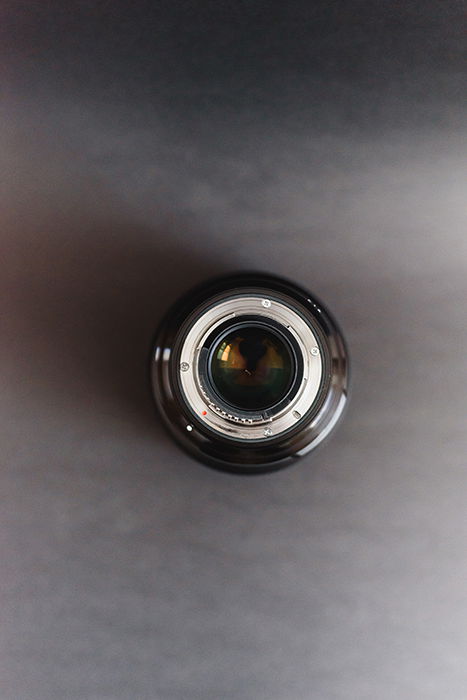 Additionally, it is compatible with the Mount Converter MC-11. This combination lets the photographer use the Sigma EF-mount lenses on Sony E-mount mirrorless camera bodies. You can get full lens performance, including autofocus, auto-exposure, and in-camera correction technology.
Additionally, it is compatible with the Mount Converter MC-11. This combination lets the photographer use the Sigma EF-mount lenses on Sony E-mount mirrorless camera bodies. You can get full lens performance, including autofocus, auto-exposure, and in-camera correction technology.
You can use an integrated LED to display select Sigma lens compatibility with the adapted camera body. The adapter supports in-camera image stabilization. 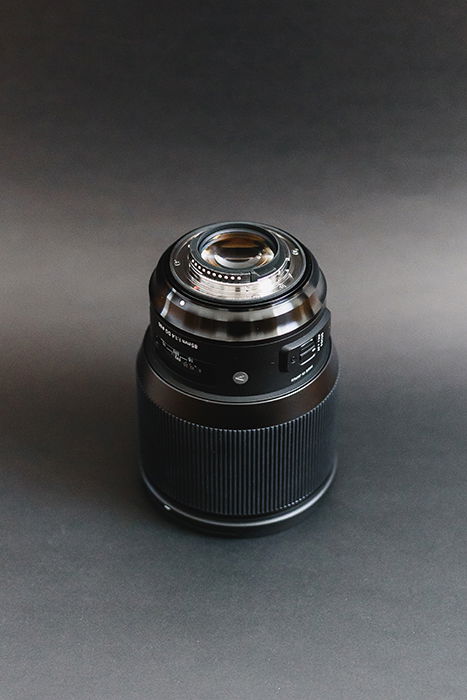
This is the part that I truly love about the Sigma 85mm f/1.4 DG HSM Art. It provides exceptional sharpness with smooth bokeh. Even wide open at f/1.4, this lens works incredibly well.
 Due to the wide aperture, this lens is my very best friend in darker settings. It allows me to take beautiful images without introducing artificial light or noise into my shots. This helps preserve the image quality.
Due to the wide aperture, this lens is my very best friend in darker settings. It allows me to take beautiful images without introducing artificial light or noise into my shots. This helps preserve the image quality.
The Sigma 85mm f/1.4 DG HSM Art gives minimal chromatic aberration at f/1.4 and shows minimal (invisible to the naked eye) barrel distortion. In my experience, the lens reaches its ultimate sharpness between f/2 and f/5.6.
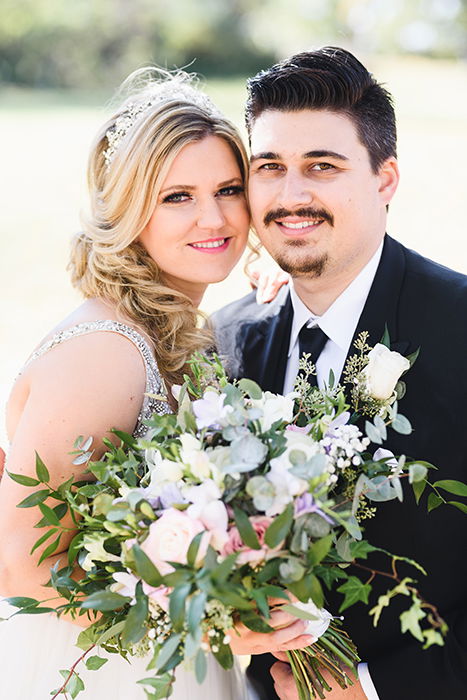 I did notice two pitfalls to this lens—vignetting, and the “onion ring” (bokeh balls with a sort of ovular shape). The vignetting issue is easy to fix with one click in Adobe Lightroom. But you can’t fix the “onion ring” effect. You will need to accept it as part of using this lens.
I did notice two pitfalls to this lens—vignetting, and the “onion ring” (bokeh balls with a sort of ovular shape). The vignetting issue is easy to fix with one click in Adobe Lightroom. But you can’t fix the “onion ring” effect. You will need to accept it as part of using this lens.
In terms of resolving power, it’s one of the best choices that you can find on the market. It can even compete with such alternatives like the Zeiss Planar T* 85mm f/1.4 Z F.2.
Overall, this lens is a fantastic addition to a professional or intermediate photographer’s kit and gives your images exceptional sharpness. 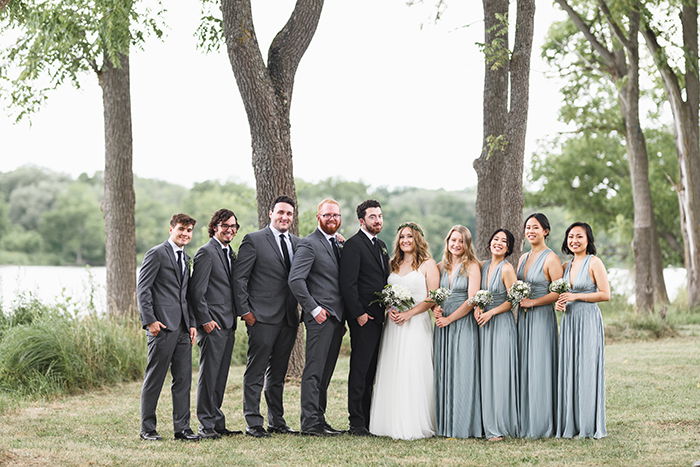
One of the best parts of this lens is focusing. Thanks to its hypersonic motor, autofocus is fast, almost silent, and locks onto your target. You’re ready to capture in less than a second. Some of you may wonder how the third-party lens performs with Nikon cameras. I’m using it with my Nikon D750.
At the start, I connected it to the Sigma USB dock to micro-adjust AF for all focus distances, as it was front-focusing when I first got it. Once fine-tuned, it worked accurately.
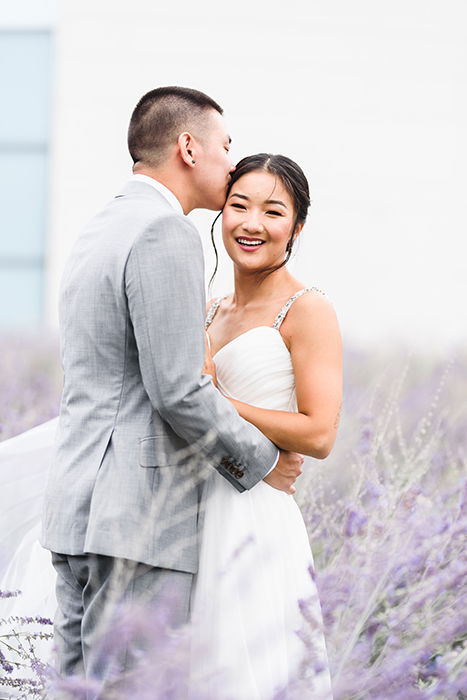
You need to remember that f/1.4 depth of field is narrow. If you prefer a manual focus, you can switch the lens to manual focus by rotating the focus ring. It works even during continuous autofocus.
You can easily find the perfect focus without having to touch the focus mode switch. This feature is a game-changer if you are shooting in manual mode and your object is darting between lighter and darker spots.
This lens has only a single switch to activate or deactivate autofocus. The manual focusing ring on the lens is pretty generous in size at 1 7/8” wide and is composed of rubber with a ribbed texture. The filter thread diameter is 86mm.
With its matte black finish and a thick focus ring, the Sigma 85mm f/1.4 DG HSM Art has the default design characteristics of a modern lens.
The barrel is made from a thermally stable composite material, which is proprietary to Sigma. It has a rich, distinct look to it and it feels incredibly solid while handling. Despite heavy use, my lens still looks like it’s brand new.
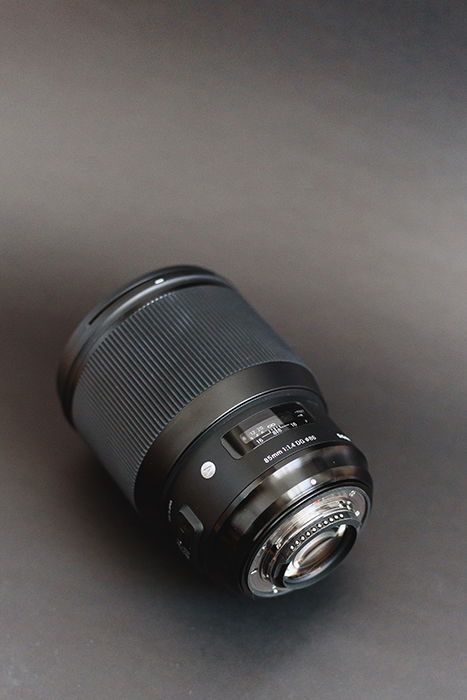
The stand-out disadvantage of this lens is the weight. The Sigma 85mm f/1.4 DG HSM Art weighs 1.13 kg and is 95 x 126mm in size. This compares to the Canon EF 85mm f/1.4L IS USM which is only 950 g and 89 x 105mm in size. This difference can be hard to get used to, but once you see how the lens performs, you’ll agree it’s completely worth it.
The lens has a dust and splash-proof construction to protect the mount from dust and water droplets.
To protect the glass, I have been using a B+W 86mm XS-Pro Clear MRC-Nano 007 filter for two years. The filter has had no effect on the image quality, so I would highly recommend it.

There are several alternatives to the Sigma 85mm f/1.4 DG HSM Art. As a Nikon user, the following lens recommendations haven’t worked for me. But they could be helpful for other photographers.
The Canon EF 85mm f/1.4L IS USM is very similar to the Sigma in terms of performance. It’s almost double the price of the Sigma, but it’s smaller and lighter. It also feels a little more balanced when handling. This lens is known for its image stabilization, and it has a fluorine coating on the front and rear elements. This coating allows you to photograph in the rain without the fear of damage. If you are a Canon user, good luck choosing between this one and the Sigma.
Another comparable lens is also by Canon—the Canon RF 85mm f/1.2L USM. This Canon has the same bulky feeling as the Sigma, but the quality of the bokeh and image sharpness are unbeatable. Take note, it costs three times more than the Sigma.
If you are looking for something a little more budget-friendly, explore the Tamron SP 85mm f/1.8 Di VC USD that can be mounted to Canon EF, Nikon F, and Sony A. It has the signature Tamron image stabilization, which is proprietary to this brand. But it does lack in comparison when it comes to sharpness when shooting wide open at f/1.8.
For Nikon’s DSLR users, I recommend the Nikon AF-S 85mm f/1.8F and Nikon AF-S 85mm f/1.4G. The Nikon AF-S 85mm f/1.8F is super light, much smaller, and about half the price of the Sigma. For a beginner, the Nikon option is the perfect tool for learning. For the price you pay, the image sharpness and smooth bokeh are unparalleled.
The Nikon AF-S 85mm f/1.4G is considerably pricier than the Sigma 85mm f/1.4 DG HSM Art. And at 595 grams, it’s half the weight. It’s more compact but has a mediocre sharpness, a wide-open f/1.4, and worse bokeh than other 85mm lenses. For this price, you are simply not getting anything extra.
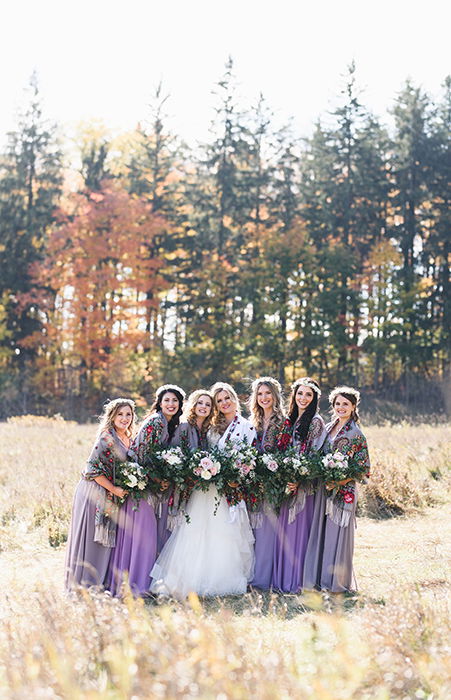
Overall, the Sigma 85mm f/1.4 DG HSM Art is excellent for professional photographers specializing in both indoor and outdoor portrait photography. Sigma falls behind when you consider the size and weight of the lens. It delivers exceptional image quality, ultrasonic focus, and fantastic performance at f/1.4.
This lens has been in my bag for over two years now and has accompanied me on nearly every shoot. I invested in high-quality camera straps to protect my back and that solved the weight issue. With all the options available out there, I wouldn’t trade my Sigma 85mm f/1.4 for anything else.
| Measurement |
Measurement
Score
|
| Build and Handling |
Build and Handling
|
| Focusing |
Focusing
|
| Image Quality |
Image Quality
|
| Miscellaneous |
Miscellaneous
|
| Value for Money |
Value for Money
|
| Total Score |
Total Score
|

